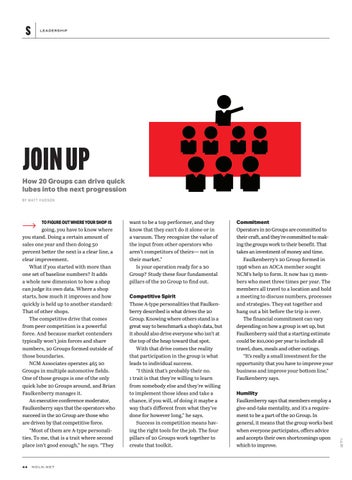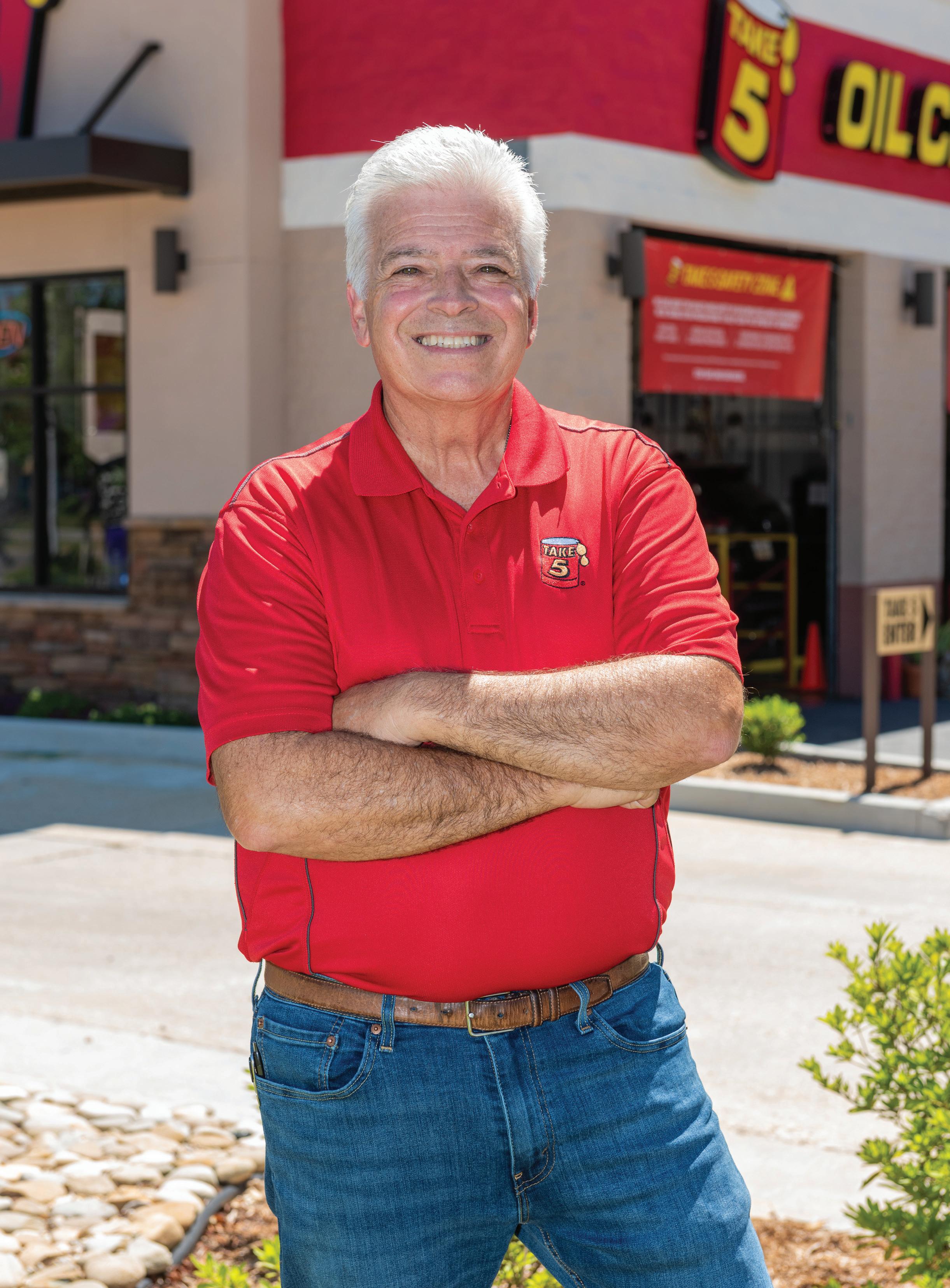S
LEADERSHIP
JOIN UP
How 20 Groups can drive quick lubes into the next progression B Y M AT T H U D S O N
going, you have to know where you stand. Doing a certain amount of sales one year and then doing 50 percent better the next is a clear line, a clear improvement. What if you started with more than one set of baseline numbers? It adds a whole new dimension to how a shop can judge its own data. Where a shop starts, how much it improves and how quickly is held up to another standard: That of other shops. The competitive drive that comes from peer competition is a powerful force. And because market contenders typically won’t join forces and share numbers, 20 Groups formed outside of those boundaries. NCM Associates operates 465 20 Groups in multiple automotive fields. One of those groups is one of the only quick lube 20 Groups around, and Brian Faulkenberry manages it. An executive conference moderator, Faulkenberry says that the operators who succeed in the 20 Group are those who are driven by that competitive force. “Most of them are A-type personalities. To me, that is a trait where second place isn’t good enough,” he says. “They
44
want to be a top performer, and they know that they can’t do it alone or in a vacuum. They recognize the value of the input from other operators who aren’t competitors of theirs— not in their market.” Is your operation ready for a 20 Group? Study these four fundamental pillars of the 20 Group to find out. Competitive Spirit Those A-type personalities that Faulkenberry described is what drives the 20 Group. Knowing where others stand is a great way to benchmark a shop’s data, but it should also drive everyone who isn’t at the top of the heap toward that spot. With that drive comes the reality that participation in the group is what leads to individual success. “I think that’s probably their no. 1 trait is that they’re willing to learn from somebody else and they’re willing to implement those ideas and take a chance, if you will, of doing it maybe a way that’s different from what they’ve done for however long,” he says. Success in competition means having the right tools for the job. The four pillars of 20 Groups work together to create that toolkit.
Commitment Operators in 20 Groups are committed to their craft, and they’re committed to making the groups work to their benefit. That takes an investment of money and time. Faulkenberry’s 20 Group formed in 1996 when an AOCA member sought NCM’s help to form. It now has 13 members who meet three times per year. The members all travel to a location and hold a meeting to discuss numbers, processes and strategies. They eat together and hang out a bit before the trip is over. The financial commitment can vary depending on how a group is set up, but Faulkenberry said that a starting estimate could be $10,000 per year to include all travel, dues, meals and other outings. “It’s really a small investment for the opportunity that you have to improve your business and improve your bottom line,” Faulkenberry says. Humility Faulkenberry says that members employ a give-and-take mentality, and it’s a requirement to be a part of the 20 Group. In general, it means that the group works best when everyone participates, offers advice and accepts their own shortcomings upon which to improve.
GETTY
TO FIGURE OUT WHERE YOUR SHOP IS
NOLN.NET
07_Service.indd 44
6/25/20 7:54 AM









